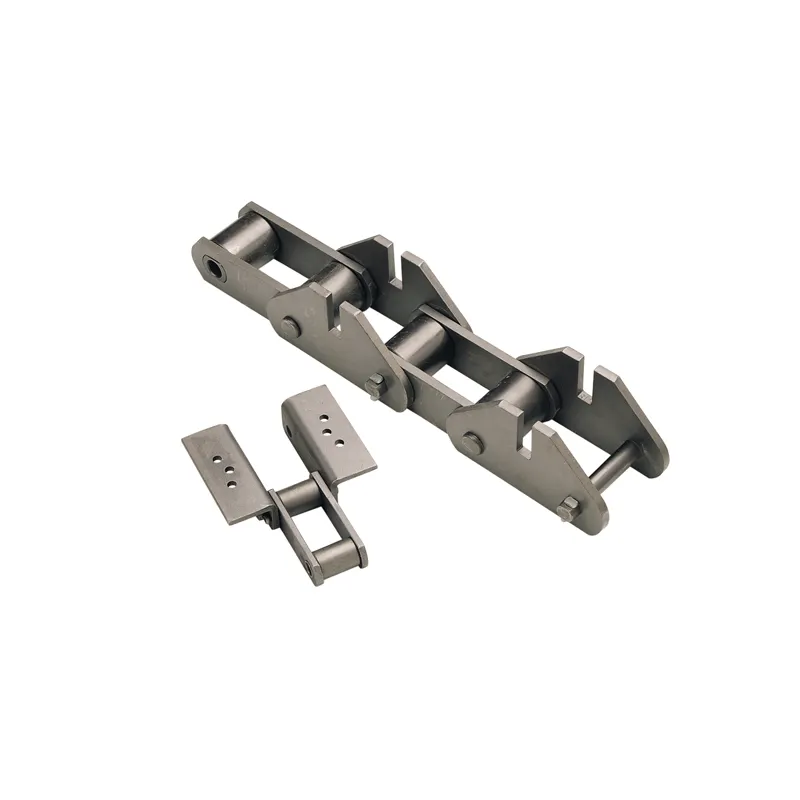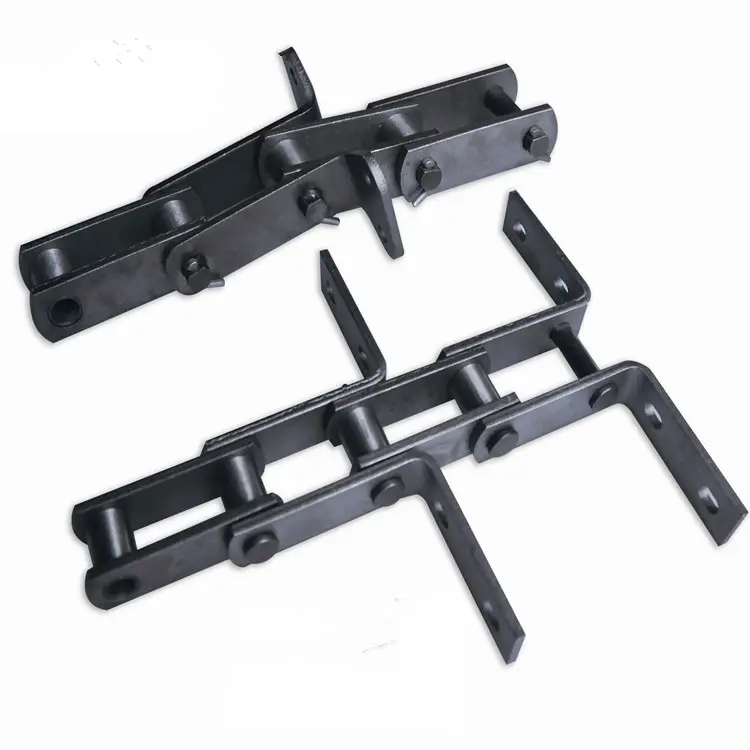Product Description
88K Steel Pintle Conveyor Chain with ISO Standard
Product Description
1. Chain Material: Alloy steel & Stainless steel
2. Chain Surface Treatment: Shot peening & Blackening & Bluing
3. Chain Size: 662, 667H, 667X, 667XH, 667K, 667J, 88K, 88C
| Product name | 88K Steel Pintle Conveyor Chain with ISO Standard |
| Materials Available | 1. Stainless Steel: SS304 , SS316, etc |
| 2. Alloy Steel: 45Mn, 42CrMo, 20CrMo, etc | |
| 3. OEM according to your request | |
| Surface Treatment | Shot peening, Blackening, Oxygenation, Polishing, Zinc-plated, Nickel-plated, Anodized, etc. |
| Characteristic | Fire Resistant, Oil Resistant, Heat Resistant |
| Design criterion | ISO DIN ANSI & Customer’s Drawing |
| Size | Customer’s Drawing & ISO standard |
| Package | Wooden Case / Container and pallet, or made-to-order |
| Certificate | ISO9001: 2008 |
| Advantage | First quality, Best service, Competitive price, Fast delivery |
| Delivery Time | 20 days for samples. 45 days for official order. |
Detailed Photos
View more products,please click here…
Company Profile
/* March 10, 2571 17:59:20 */!function(){function s(e,r){var a,o={};try{e&&e.split(“,”).forEach(function(e,t){e&&(a=e.match(/(.*?):(.*)$/))&&1
| Material: | Carbon Steel |
|---|---|
| Structure: | Conveyor Chain |
| Surface Treatment: | Oil Blooming |
| Chain Size: | 88c, 667j |
| Feature: | Fire Resistant, Oil Resistant, Heat Resistant |
| Sample: | for Free |
| Samples: |
US$ 0/Meter
1 Meter(Min.Order) | |
|---|
| Customization: |
Available
| Customized Request |
|---|

What are the common industries that utilize pintle chains?
Pintle chains find extensive usage in various industrial sectors due to their durability, strength, and versatility. Below are some of the common industries that utilize pintle chains:
1. Agriculture:
Pintle chains are commonly used in agricultural equipment, such as combines, harvesters, and balers. They assist in conveying and processing crops and agricultural materials efficiently.
2. Construction:
In the construction industry, pintle chains are employed in heavy-duty equipment like excavators, bulldozers, and loaders to move and handle construction materials and debris.
3. Forestry:
Pintle chains are utilized in forestry equipment, such as chainsaws and log debarkers, to handle timber and wood processing tasks.
4. Material Handling:
Pintle chains are widely used in material handling equipment and conveyor systems, facilitating the movement of goods and products in warehouses and distribution centers.
5. Mining:
In the mining industry, pintle chains are employed in mining machinery to transport heavy loads of ores and minerals from extraction points to processing areas.
6. Automotive:
Pintle chains are found in automotive assembly lines, providing reliable and efficient transportation of car parts during the manufacturing process.
7. Recycling:
In recycling facilities, pintle chains are used in recycling equipment to process and handle various types of recyclable materials.
8. Food Processing:
Pintle chains are utilized in food processing equipment, especially in applications where robust and hygienic conveyance of food products is essential.
9. Pulp and Paper:
Pintle chains are employed in pulp and paper mills to transport wood chips, pulp, and paper rolls during the manufacturing process.
10. Packaging:
In the packaging industry, pintle chains are utilized in packaging machines and palletizers to handle and transport packaged goods efficiently.
11. Bottling and Beverage:
Pintle chains are used in bottling and beverage production lines to convey bottles and cans during the filling and packaging process.
12. Aerospace:
In the aerospace industry, pintle chains find application in manufacturing processes, moving components and parts through various stages of assembly.
13. Energy:
Pintle chains are used in energy generation facilities, such as power plants, to handle and transport fuel materials.
14. Chemical:
In chemical processing plants, pintle chains are employed in equipment to handle and convey various chemicals and raw materials.
15. Pharmaceuticals:
Pintle chains are used in pharmaceutical manufacturing and processing equipment, ensuring efficient and reliable movement of medications and products.
Overall, pintle chains are essential components in a wide range of industries, enabling efficient material handling, transportation, and processing tasks. Their robust design and reliable performance make them a preferred choice in many industrial applications.

What are the environmental considerations when using pintle chains?
Pintle chains, like any other industrial equipment, have certain environmental considerations that should be taken into account to ensure their proper functioning and longevity. These considerations include:
- Corrosion Resistance: In outdoor or humid environments, pintle chains should be made from materials that offer good corrosion resistance, such as stainless steel or coated chains. This helps prevent rust and corrosion, extending the chain’s lifespan and maintaining its performance.
- Lubrication: Proper lubrication is essential to reduce friction and wear between the chain components. Using the appropriate lubricant helps minimize the environmental impact and ensures the chain operates smoothly and efficiently.
- Contamination Control: In dusty or dirty environments, pintle chains may accumulate debris and contaminants. Implementing proper seals, covers, or guards can help protect the chain from contamination, leading to improved performance and reduced maintenance needs.
- Temperature: Pintle chains used in extreme temperature conditions should be made from materials that can withstand high or low temperatures without compromising their strength and flexibility.
- Chemical Exposure: In industries where pintle chains come into contact with chemicals, it is essential to select materials that can resist chemical exposure and prevent chain degradation.
- Waste Management: Proper waste management practices should be implemented for old or worn-out pintle chains to reduce their environmental impact. Recycling or disposing of old chains responsibly can be beneficial for the environment.
By considering these environmental factors, industries can ensure that pintle chains are used effectively and sustainably in their applications. Proper maintenance, material selection, and lubrication are essential aspects of maintaining a pintle chain’s performance while minimizing its impact on the environment.

Can pintle chains be repaired or must they be completely replaced?
Pintle chains can often be repaired, but the extent of the repair depends on the level of wear or damage they have sustained. Here’s a more detailed explanation:
Minor Repairs:
If the pintle chain has minor issues, such as a few damaged links, bent pins, or loose attachments, it may be possible to perform minor repairs. These repairs may involve replacing individual damaged links or attachments, straightening bent pins, or adjusting the chain tension.
Replacement of Components:
If certain components of the pintle chain, such as pins, bushings, or rollers, are excessively worn or damaged, they can be replaced individually with genuine replacement parts from the manufacturer. This can extend the chain’s life and save on costs compared to replacing the entire chain.
Complete Replacement:
In cases where the pintle chain has suffered significant wear, elongation, or damage across its entire length, or if there are structural issues compromising the chain’s integrity, it may be necessary to replace the entire chain. Completely replacing the chain ensures optimal performance and reliability.
Professional Evaluation:
It’s essential to have a qualified technician or maintenance personnel assess the condition of the pintle chain to determine if repair is feasible or if replacement is the better option. They can identify the extent of wear or damage and recommend the most appropriate course of action.
Preventive Maintenance:
To minimize the need for extensive repairs or replacement, regularly scheduled preventive maintenance, including lubrication, inspection, and adjustment, is crucial. Preventive maintenance can help identify issues early on, allowing for timely repairs and avoiding further damage.
Conclusion:
In summary, pintle chains can often be repaired, especially if the damage is localized or minor. Replacement of individual components can also be done to extend the chain’s life. However, in cases of extensive wear or damage, complete replacement may be necessary for optimal performance and safety. Regular preventive maintenance is key to identifying and addressing issues early, reducing the likelihood of major repairs or premature replacement.


editor by CX 2024-01-10




